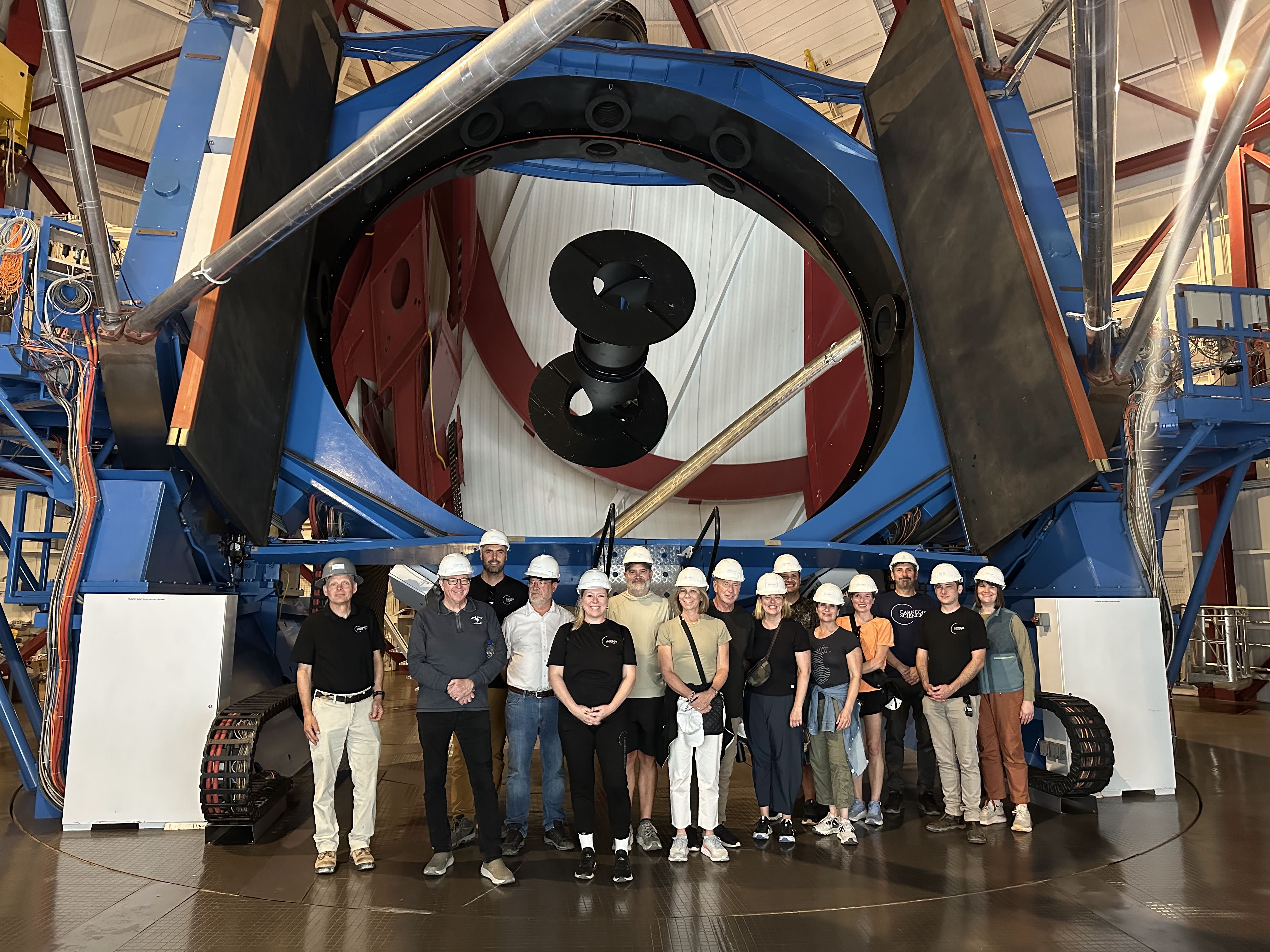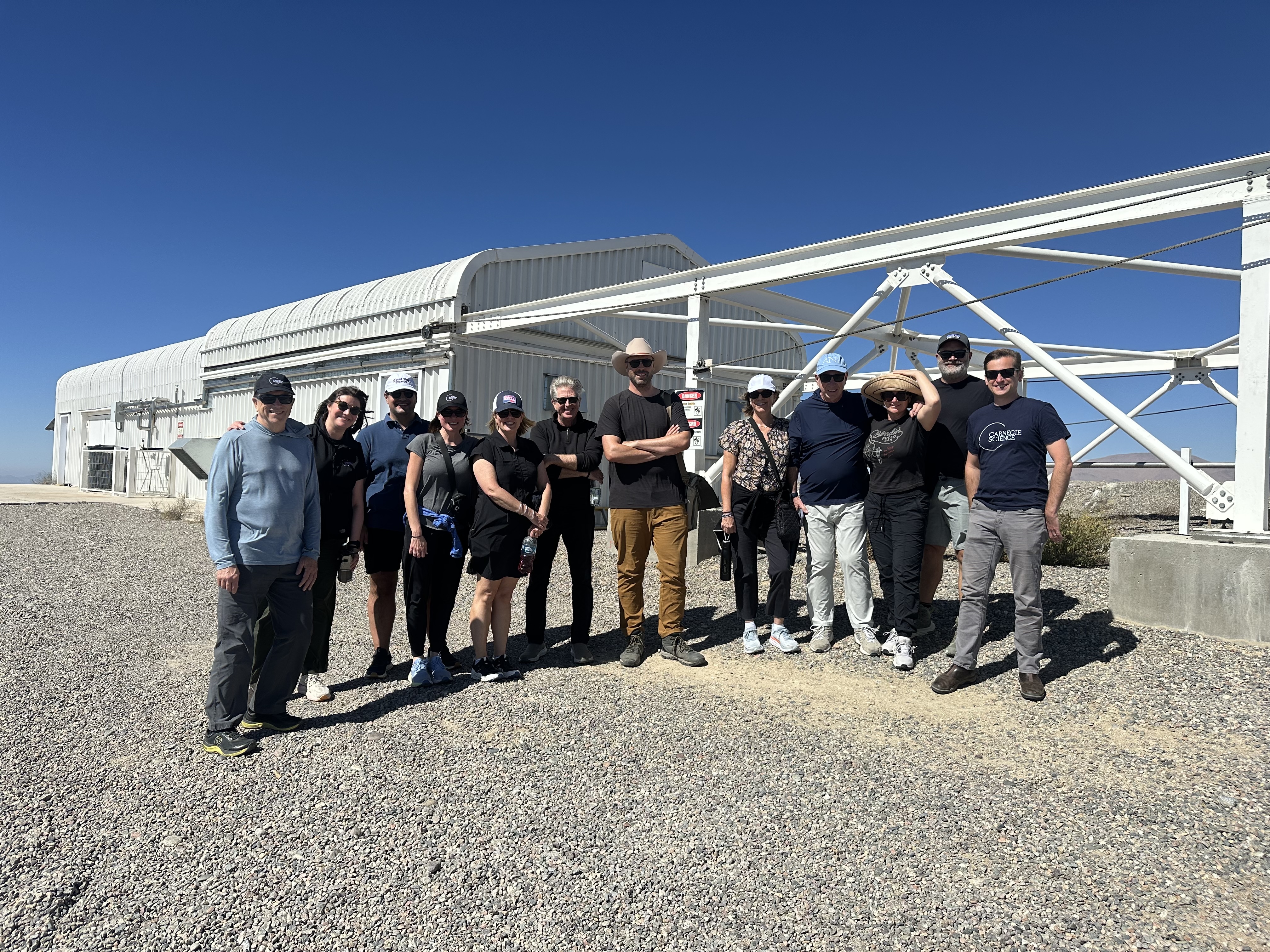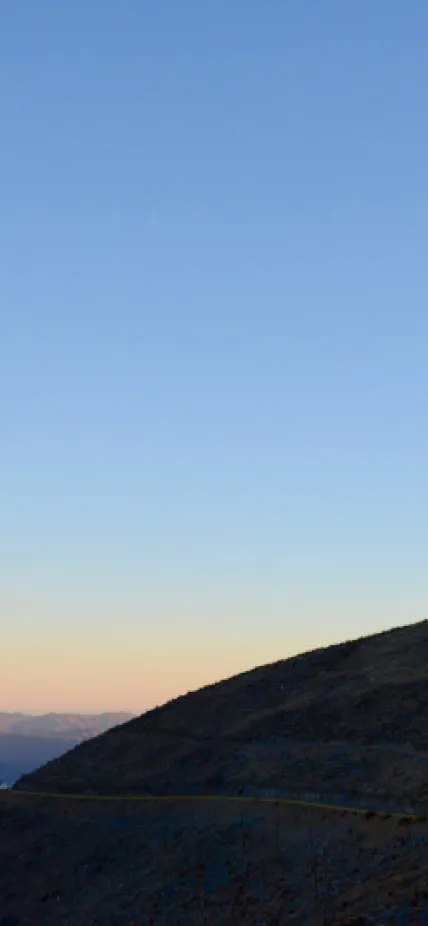This winter, a delegation from Dallas’ Perot Museum of Nature and Science visited Carnegie Science’s Las Campanas Observatory, deepening a programmatic partnership that shared the wonders of the Great North American Eclipse with North Texas communities last April.
The trip marked a first-time visit to Chile’s Atacama Desert for many of the attendees, who were accompanied by Carnegie Science President John Mulchaey, Chief Development Officer Jeanine Forsythe, and other individuals who played key roles in April’s eclipse partnership. The visit offered a special opportunity to see astronomy in action, including nighttime visits to the Swope Telescope for an exclusive look through the eyepiece.
“We are truly grateful for our partnership and can’t wait to continue to grow our joint efforts,” said Linda Silver, Eugene McDermott Chief Executive Officer of the Perot Museum, who described the observatory as one of the most spectacular land- and skyscapes in the world. “I am still thinking of the night sky above LCO.” In addition to Silver, Chief Development Officer Katherine Stenesen and select members of their teams made the journey from Dallas to Chile.
The Las Campanas Observatory and the telescopes housed on the property are among the crown jewels of Carnegie Science’s historic campuses and instruments. Dozens of staff operate and maintain the telescopes and facility, enabling astronomers from around the world to make use of the imaging and data collected from each machine. During the visit, the telescope operators demonstrated how each telescope functions.
“When people think of telescopes, they often think of the tube-and-tripod models that are popular with amateur astronomers,” said Mulchaey. “But the telescopes our scientists observe on—the ones that allow us to reach much deeper into space—are larger by many magnitudes and require significant expertise to operate. It’s always a thrilling experience to introduce someone to our telescopes and see their eyes light up at the immense size and power they represent. I’m thrilled we got to share this opportunity with our friends at the Perot Museum as a thank-you for their partnership and a commitment to our plans for future collaborations.”

Partnerships with other organizations, from Pasadena’s Huntington Library, Art Museum and Botanical Gardens to The Simons Foundation’s Math for America D.C., have long been central to Carnegie Science’s commitment to community engagement. And though Carnegie Science’s partnership with the Perot Museum is comparatively new, the close collaboration during the Great North American Eclipse last spring reached tens of thousands of people in North Texas, representing the largest single engagement event in Carnegie Science’s history. Capitalizing on both the museum’s location in the path of totality and the deep bench of astronomical expertise within Carnegie’s scientific staff, 29 Carnegie Science astronomers joined Perot Museum employees and volunteers to visit more than 40 schools and upwards of 15,000 students in the week preceding the eclipse. On the day of the eclipse, Carnegie astronomers were on hand at the museum, as well as a number of other neighboring parks and facilities, safely guiding thousands through safely viewing the celestial phenomenon. For participants of all ages, experiencing the eclipse was a once-in-a-lifetime occasion and an extraordinarily special opportunity to engage with science in their hometown.
The excursion to the Las Campanas Observatory was an opportunity to widen the circle of partners, deepen collaborations, and strengthen our network of support. Also among the trip’s attendees was Stephen Little, curator at the Los Angeles County Museum of Art and organizer of the museum’s “Mapping the Infinite: Cosmologies Across Cultures” exhibition, which was on display earlier this year. Another example of Carnegie’s commitment to community engagement, the LACMA exhibition included a number of Carnegie Observatories contributions, including Edwin Hubble’s famed “VAR!” plate, captured on the 100-inch Hooker Telescope at Carnegie’s Mount Wilson Observatory in 1923, and an image from the MeerKAT radio telescope, captured by postdoc Allison Matthews. The exhibition was presented as part of the Getty Foundation’s PST ART: Art & Science Collide initiative and features contributions from more than 40 institutions, including Carnegie Science.
Serendipitously, the trip coincided with Carnegie Science’s 123rd birthday and inaugural Carnegie Science Day. Kitchen staff at the observatory prepared a wide range of traditional Chilean desserts to celebrate the occasion, which was completed with a rousing chorus of Happy Birthday. Carnegie Science looks forward to continually building our community engagement efforts through our next 123 years.

